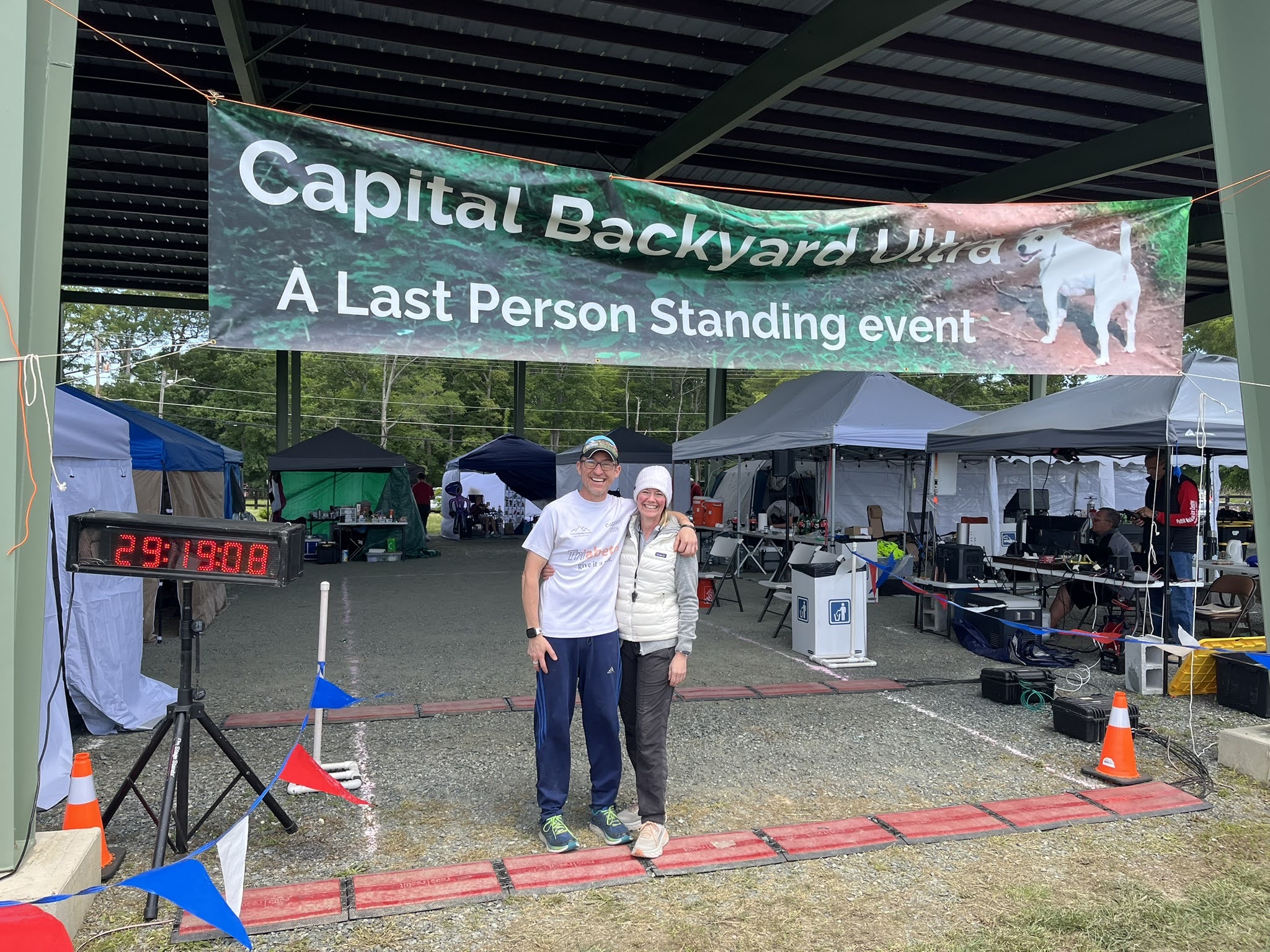(…or, How I Packed Everything but the Kitchen Sink—wait, no, I packed that too.)
Last week, I wrote a race preview for a race I planned to run over Memorial Day. This is my entry after the race.
So I ran the race. Where to start?
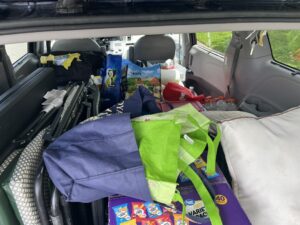
Well I got to the race the day before it started. I had to, in a way, because my van was bursting with stuff. I wasn’t sure what to bring, so I decided to bring well, EVERYTHING!
After check-in, I was given my own 11×11 plot of land (basically a suburban backyard minus the grass and grill) to set up my little home base. I popped up my trusty 10×10 Walmart tent and got to organizing.
Organizing, by the way, is a skill. And maybe not one ideally suited for someone with ADHD. But I did my best. I’d binge-watched enough YouTube race setup videos to qualify for a diploma in Ultra Tent Engineering. One of the pro tips I stole was using those clear over-the-door shoe racks. Genius. I bought several and created what I like to call The Wall of Needs, organized roughly as follows:
- Nighttime row – headlamps, extra headlamps, batteries, reflective vest
- Sun stuff row – sunscreen, sunglasses, cooling towel
- Foot care row – band-aids, moleskin, blister kits, Vaseline—basically a podiatry office in a pouch.
- Music row – earbuds, headphones, MP3 player, old iPhone
Then there was a row for compression socks, a row for stretching gear, one for my water bottles, oh, so many, many, rows.
I also had several rows organized by carb amounts like a very nerdy Halloween haul. There were rows for 30 grams, 45 grams, and 60 grams of candy, and more candy, granola bars, dried fruit, Rice Krispies treats, baby food, yup, baby food. (I never said ultra running was sexy.)
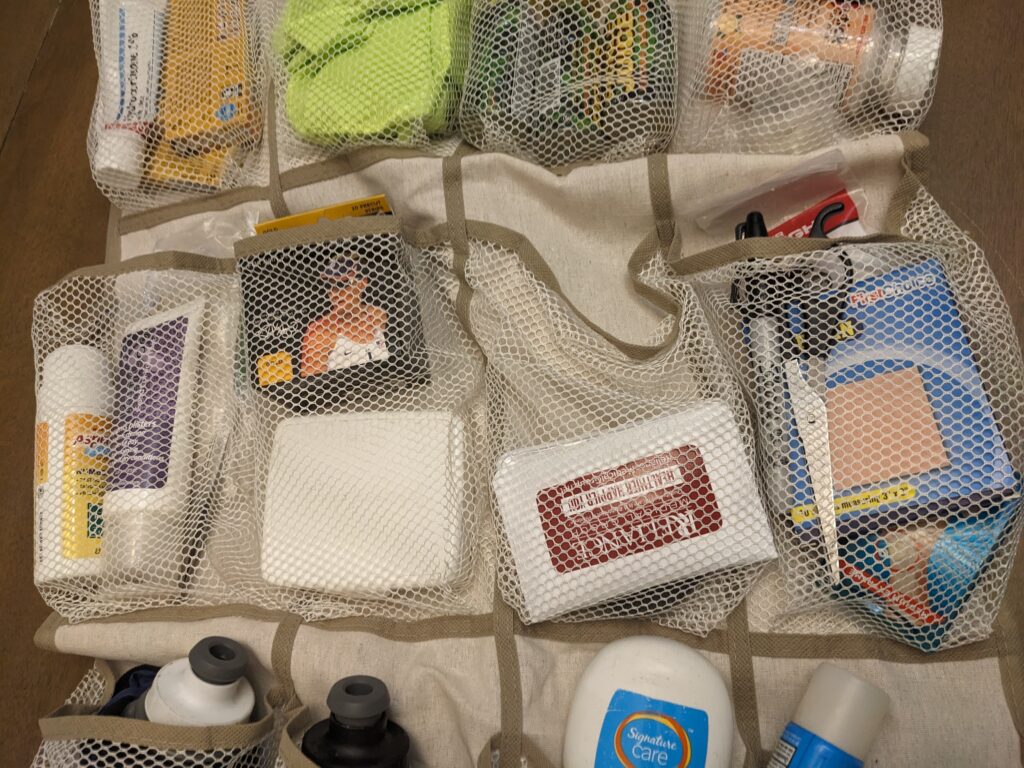
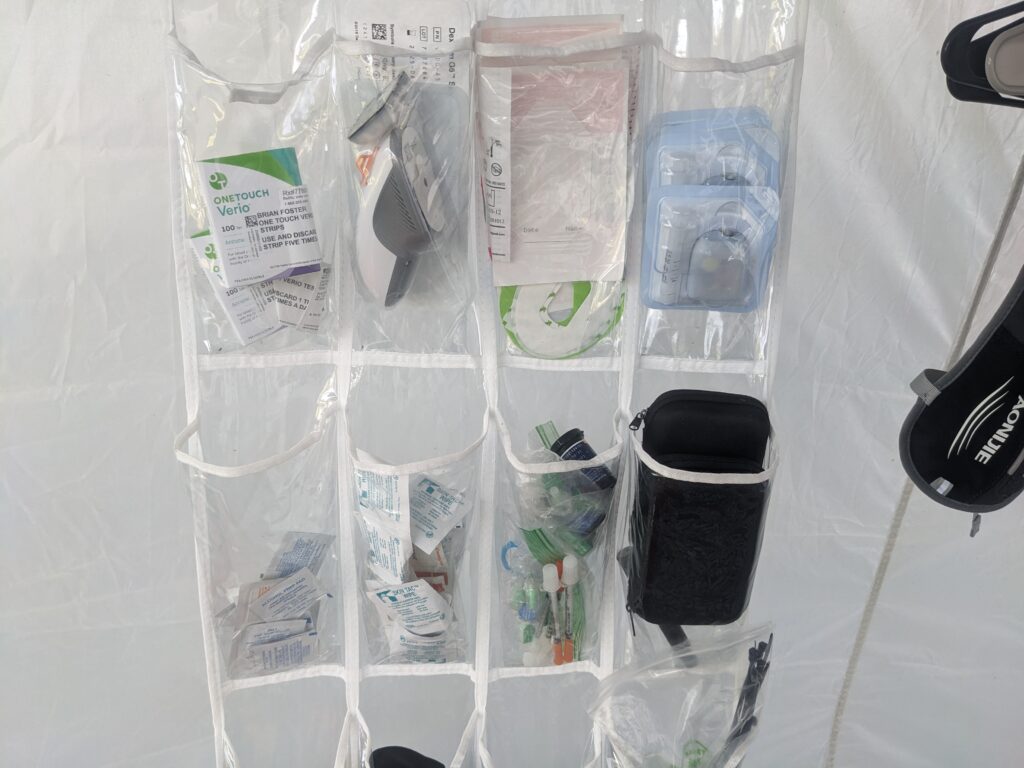
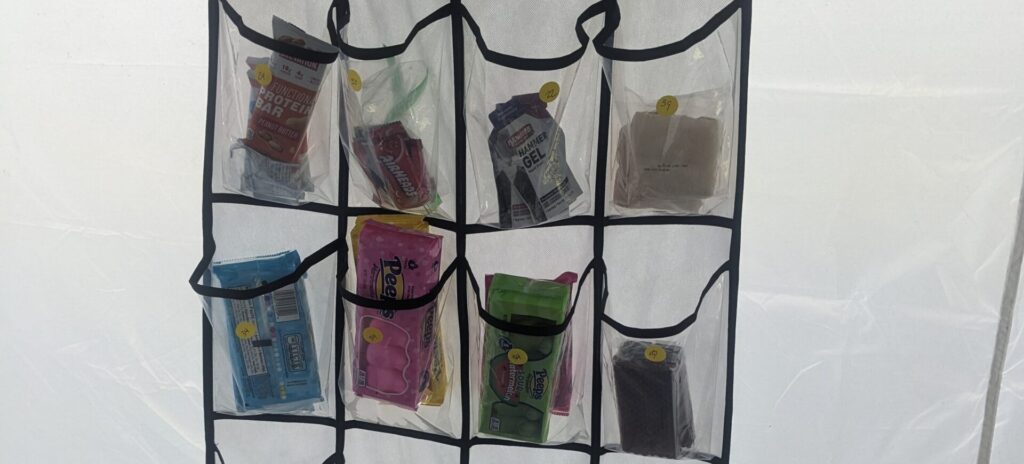
The Diabetes Row (aka the VIP section) included Pods, an extra G7, alcohol swabs, adhesive wipes, Skin Tac H, bands to keep the Pod and G7 stuck to my body, glucose meter, ketone strips, treatments of 30 grams (15 doesn’t do it when your active), etc.
Next up was clothing—bins of shorts and shirts, socks by the dozen, and a milk crate of shoes. Trail shoes for the day loop. Road shoes for the night loop.
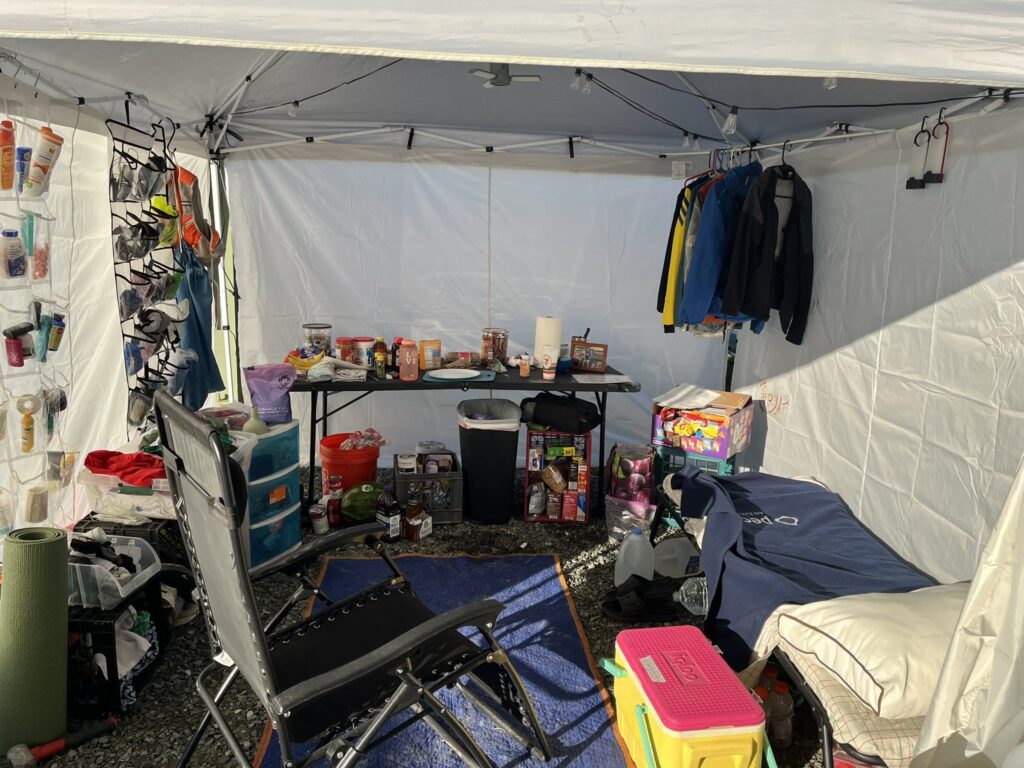
I had a table with all kinds of food on it, and then more food was hidden underneath. One cooler held fruit, bacon (yes, bacon), chicken strips, pickle juice (remember, not sexy), and insulin. An outdoor folding chair with footrests, a cot… I didn’t bring the kitchen sink, but I brought baby wipes.
Honestly, I’ve been running races since I was 11, but this felt brand new. Backyard Ultras are a different beast. One where logistics and solo planning are just as crucial as training..
Which brings me to crewing—or, in my case, not crewing.
Other runners had teams. You’d see someone stumble in from a loop and immediately bark, “Cookies! Socks! Electrolytes!” like a king issuing commands from a recliner. Meanwhile, I’d jog in, rip off a shoe, dig through a crate, grab my Rice Krispies treats with my teeth while taping a blister, and try to remember where I put my extra Gatorade bottle. Solo running: great for independence, terrible for efficiency. By the 100-mile mark, there were 14 runners left—13 had crews. The one guy who didn’t? Total beast. No other word.
Morning of the race: I ate about three hours early—oats, raisins, honey. My big plan was to photograph each lap’s fuel, leftovers, and post-lap glucose. A very scientific approach.
I tried recording what I was eating by showing before and after the lap pictures, along with my blood glucose after each lap. I was averaging between 70-90 grams of carbs per lap. (The water bottle has 25 grams of carbs) Examples are included below:

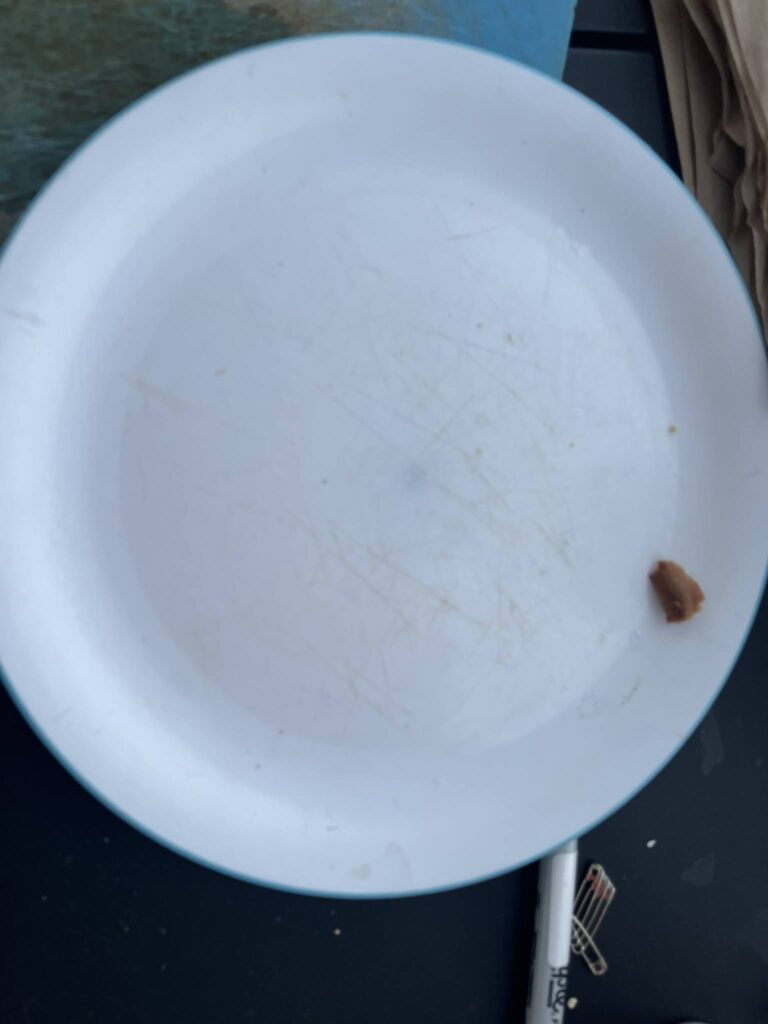


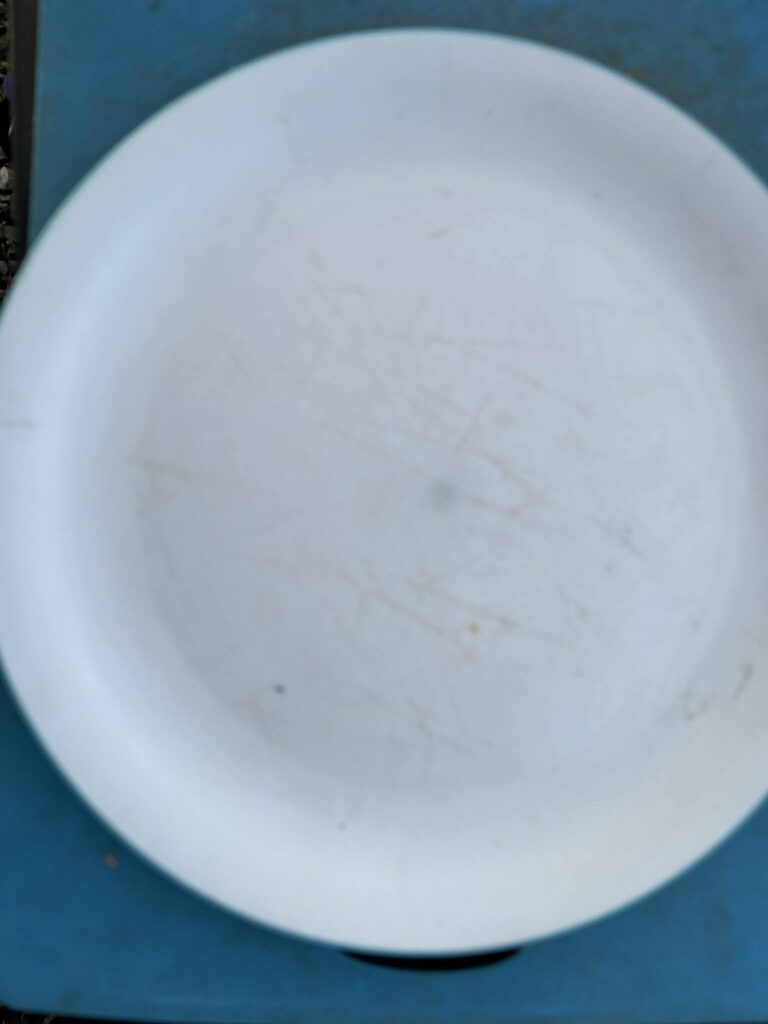
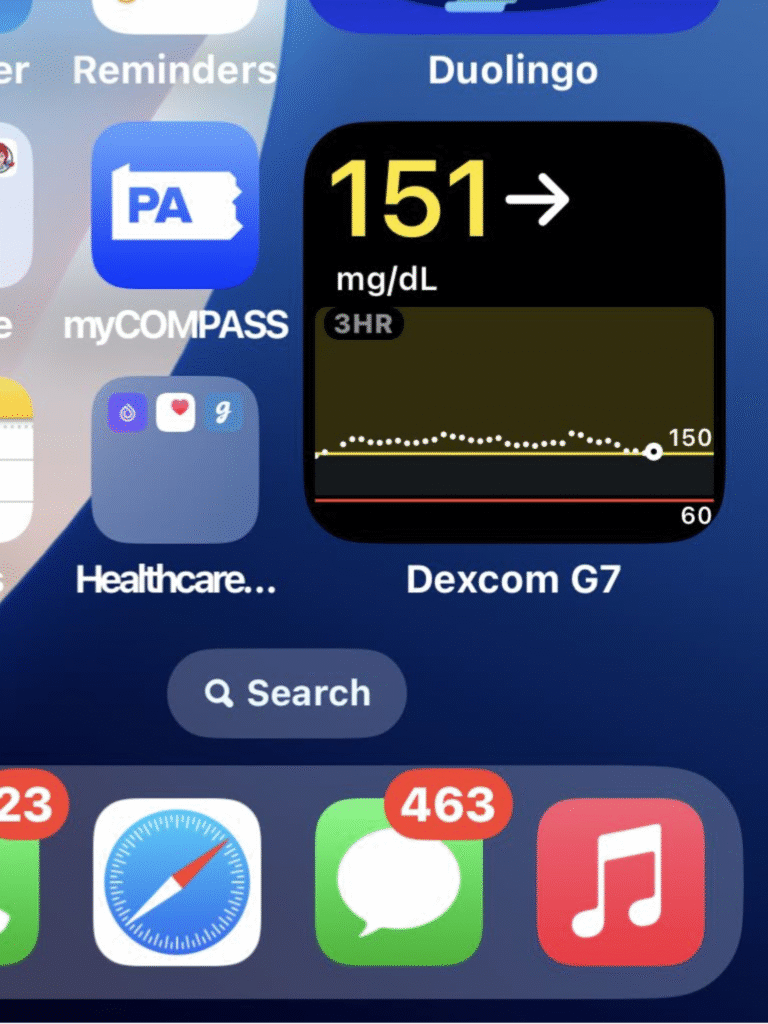
The early laps went by pretty smoothly; everyone is very social at these events, and the early miles feel relatively easy. There are two schools of thought: run faster and have more rest, or run slower and make the effort easier. The people I thought would be around the next day were running slower, so I did the same.
I began running into some diabetes drama around lap 6 or 7. I noticed my phone battery was running low. I think it struggled to maintain a stable connection to the mobile tower, the whole area had poor reception. I was receiving readings from my son’s Dexcom (in addition to my own), which likely drew even more power.
Eventually, I had to ditch my phone. I had initially left the Omnipod controller in the tent, and the lap that I brought it wasn’t connecting to the Dexcom. I also had the Dexcom linked to my watch, but then that started having issues. It was around the time the phone was charging that I abandoned the grand experiment of taking photos of my meals. Oh well. I continued eating and taking insulin according to plan.
And then, of course, the race did not go as planned. One thing goes wrong, you fix it, and then something else breaks. My issue became the heat. I can run in heat, but not as well as others.
On lap 11, I didn’t get to fill my bandana with ice, and in the rush to get back to the corral, I forgot my handheld juice bottle, which also had my snacks. I had backup snacks, but they were for lows. I tried to slow down to avoid a blood sugar crash, but that wasn’t easy. I got back to the tent with a minute and 20 seconds to spare.
Someone offered to refill my bandana with ice, while I grabbed my “OH SH*T!!” bag—yes, that’s what I called it – it had a water bottle and 120 grams of carbs. I made it back to the corral with about 15 seconds to spare. The bandana came back, but—tragedy—it didn’t have the usual handfuls of ice.
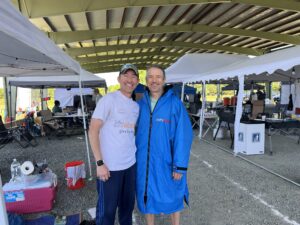
I was about to plunge my hand into the communal ice bucket when the horn sounded. No ice.
So I started lap 12 already overheating and with my blood glucose dropping. I dumped water on my head and tried to eat while running, but my sugar wouldn’t come up. I can’t speak for others with diabetes, but when I’m active, sometimes I just can’t raise my blood sugar, no matter how many carbs I take in.
I believe it’s because my body is so busy fueling my muscles that it ignores the glucose needs. The only way to raise my sugar is to stop running.
So I stopped and walked. I tried to stay positive. But after so many hours of running, I couldn’t walk fast, no matter how hard I tried. I was walking fast—just not fast enough. I walked to the halfway point, felt better, and ran the rest of the way in, but the lap took too long.
I arrived about 5–6 minutes late, and I left. Disqualified for failure to start the next lap.
It wasn’t what I’d hoped for. I felt physically prepared to run on the second day. But it wasn’t meant to be. I don’t like blaming diabetes—and I won’t. Every runner there has a reason why they didn’t make it to the next lap; I’m no different. It was as much the heat as anything else.
Overall, I was happy with my performance. I came out of it relatively unscathed, went for a run on Monday, and was back training within a few days. The tech issues are a work in progress, but I’ll plan to preuse the diabetes chat rooms to see if I can’t dig up any useful info.
It’s under those circumstances—sunburned, sweaty, and five minutes too slow—when you take stock of what you’re doing.

